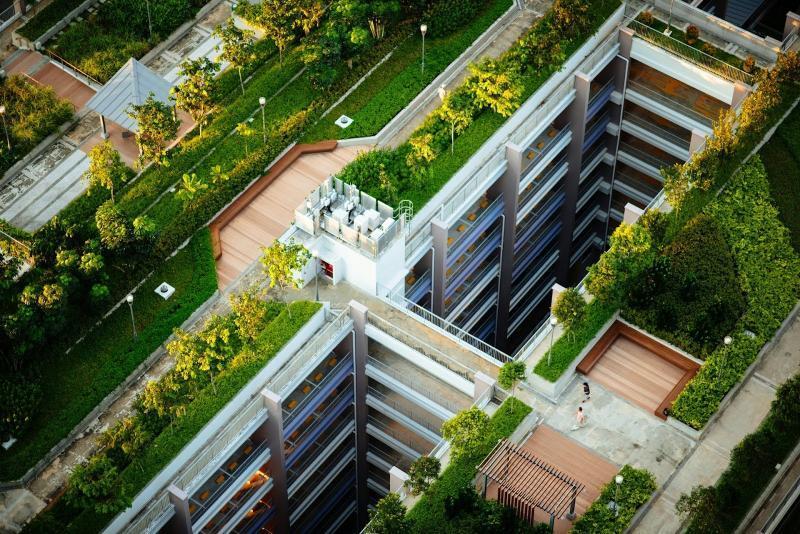
Green Roofs: Mitigating Urban Flood Risks Effectively
As the world’s population continues to urbanize, cities are facing unprecedented challenges in managing flood risks. Heavy rainfall events are becoming more frequent and intense, causing widespread damage to infrastructure, homes, and businesses. In recent years, urban flooding has been a major concern in densely populated cities, with devastating consequences for residents and economy. However, a recent study has shed light on a potential solution to mitigate urban flood risks: green roofs.
The Study
A study published by researchers from the University of California, Los Angeles (UCLA) and the University of Illinois at Urbana-Champaign found that green roofs in densely populated cities can significantly reduce flood volumes during heavy rainfalls. The study, which analyzed data from four major cities in the United States, including Los Angeles, Chicago, New York City, and Houston, revealed that green roofs can reduce flood volumes by as much as 60% during extreme rainfall events.
The researchers used a combination of field measurements, computer simulations, and laboratory experiments to assess the effectiveness of green roofs in mitigating urban flood risks. They found that the effectiveness of green roofs depends on several factors, including the type and density of vegetation, the depth and porosity of the soil, and the capacity of the drainage network.
How Green Roofs Work
Green roofs are covered with vegetation and a layer of soil, which acts as a natural filter to absorb rainwater. The vegetation helps to slow down the runoff, allowing the water to seep into the soil and be absorbed, rather than flowing rapidly over the surface. This reduces the amount of stormwater that enters the drainage network, alleviating pressure on the system and reducing the risk of flooding.
Green roofs also provide additional benefits, including:
- Insulation: Green roofs can reduce energy consumption by up to 25% by providing additional insulation against heat and cold.
- Air quality improvement: Green roofs can remove pollutants and particulate matter from the air, improving air quality and reducing the negative impacts of air pollution.
- Urban heat island mitigation: Green roofs can reduce the urban heat island effect by providing shade and cooling the surrounding air through evapotranspiration.
Implementation Challenges
While the study’s findings are promising, implementing green roofs sustainably across suitable buildings is crucial for maximizing benefits in urban flood management. Some of the challenges associated with implementing green roofs include:
- Cost: Green roofs can be expensive to install, especially for large buildings or complex rooftop structures.
- Maintenance: Green roofs require regular maintenance to ensure the health and longevity of the vegetation.
- Suitability: Not all buildings are suitable for green roofs, particularly those with steeply pitched roofs or limited access.
Best Practices for Implementing Green Roofs
To overcome these challenges, cities and building owners can adopt best practices for implementing green roofs, including:
- Conducting feasibility studies to assess the suitability of buildings for green roofs.
- Working with architects and engineers to design and install green roofs that are tailored to specific building types and locations.
- Developing maintenance plans and schedules to ensure the long-term health and effectiveness of green roofs.
- Encouraging public-private partnerships to share the costs and benefits of green roof implementation.
Conclusion
The study’s findings demonstrate the potential of green roofs to mitigate urban flood risks in densely populated cities. By reducing flood volumes and alleviating pressure on drainage networks, green roofs can help to protect infrastructure, homes, and businesses from the devastating impacts of flooding. However, implementing green roofs sustainably across suitable buildings is crucial for maximizing benefits in urban flood management. By adopting best practices and addressing the challenges associated with implementation, cities can harness the power of green roofs to create more resilient and sustainable urban environments.
Source:






